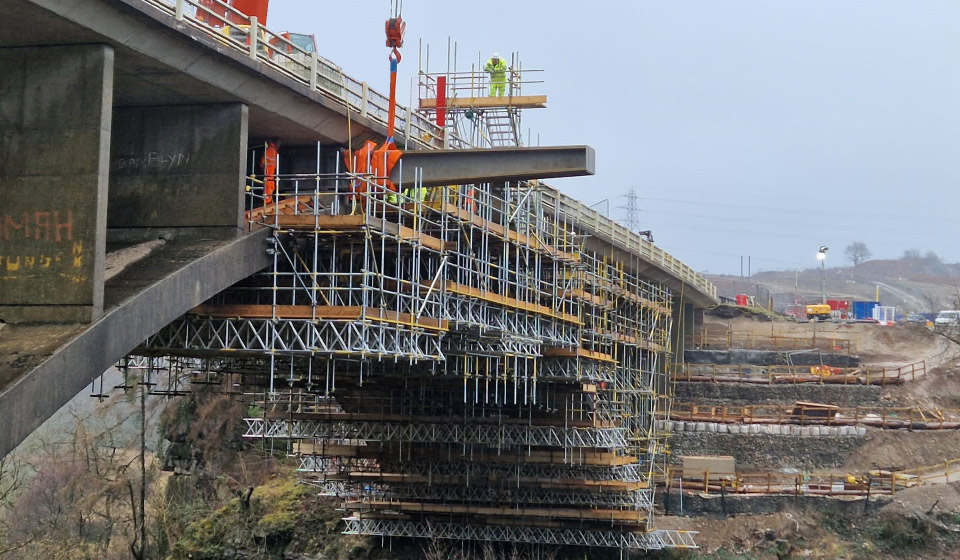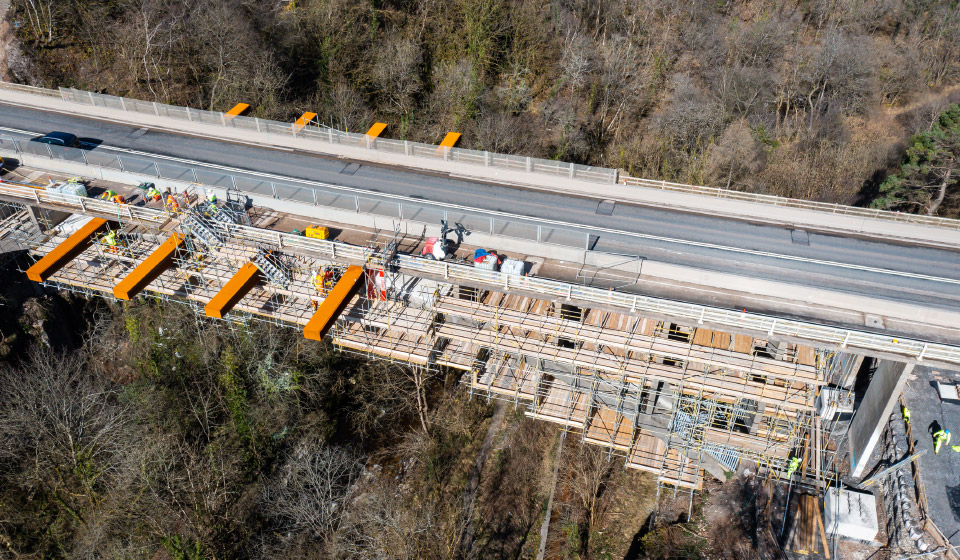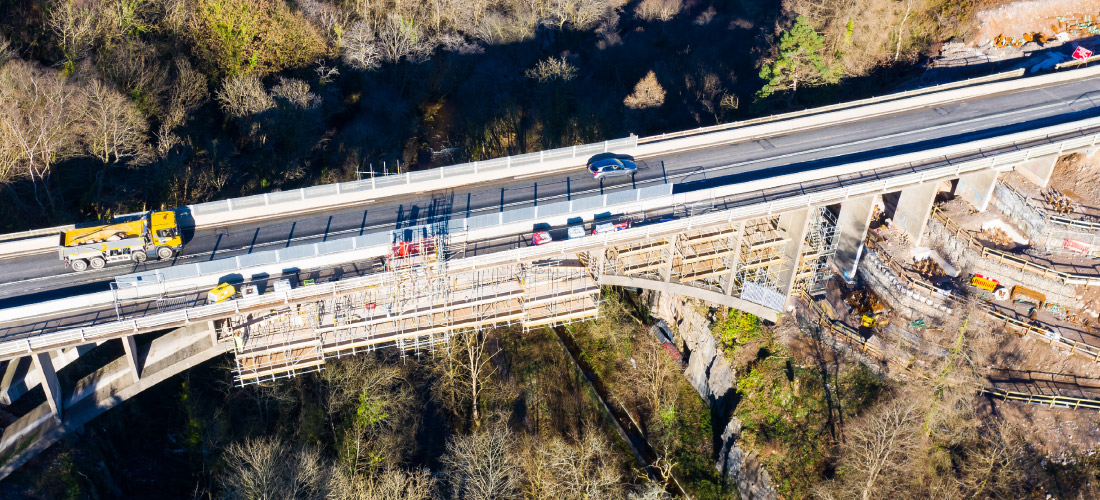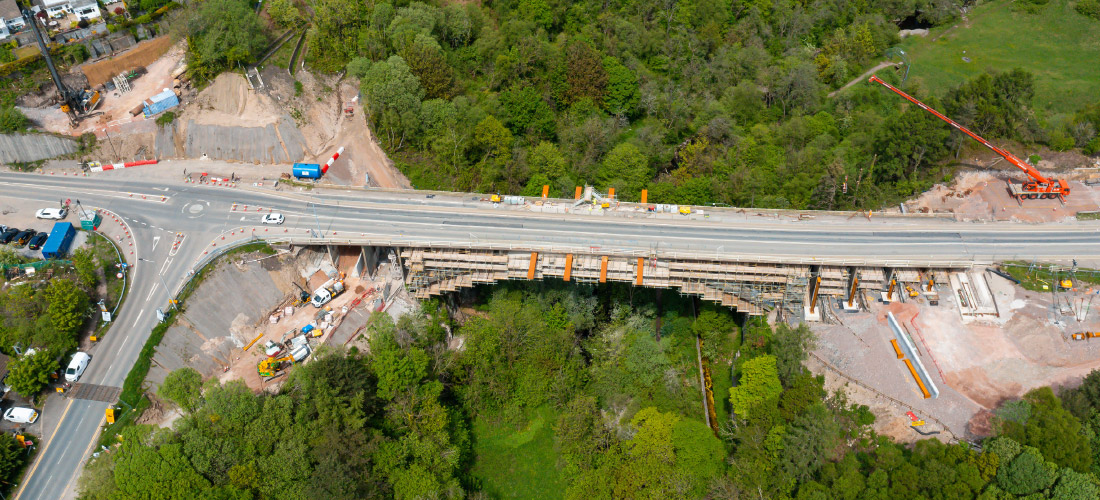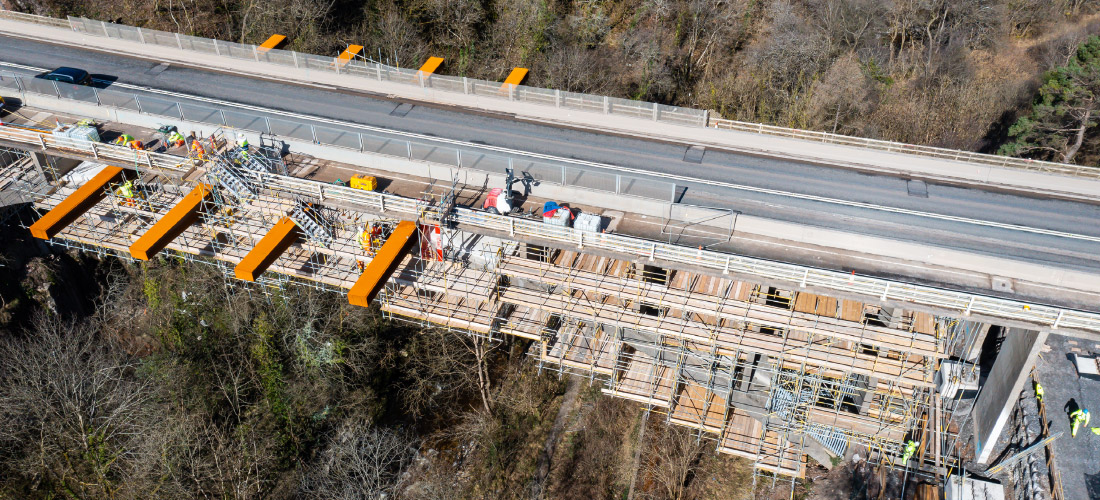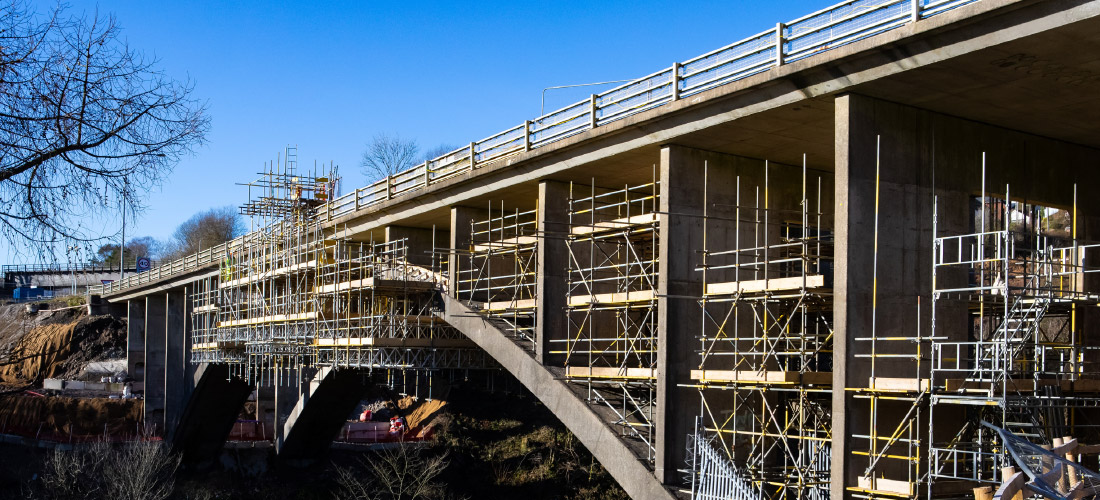Taf Fechan Viaduct
Provision of temporary access solutions to support Future Valleys Construction with strengthening and widening the concrete bridge into a dual carriageway.
The Taf Fechan viaduct was originally constructed in the 1960s to form part of the Heads of the Valleys Project initiative commissioned by the Ministry of Transport to improve the road link between South West Wales and the Midlands. The self-supporting concrete viaduct constructed by Christiani-Shand spans the valley below with a single arch and required complex installation works because the structure needed to be self-supporting even whilst under construction. The contractor had to devise a completely new method of construction to build the Taf Fechan Viaduct, and the arch was formed step-by-step outwards from its two abutments. Temporary towers similar to those on a conventional suspension bridge supported a mobile shutter for pouring concrete. Then once each section is set into place, the shutter is moved along to the next section to start pouring, with the emerging structure supporting its entire weight.
Future Valleys Construction is a specialist company purposely formed to deliver the A465 Sections 5&6 MIM Project, a form of public-private partnership. The project comprises the Design, Build, Finance, Operation and Maintenance (DBFOM) of the 17.7km widening of the A465 trunk road between Dowlais Top and Hirwaun in Wales. The £590-million scheme launched in 2021 is the largest highway project ever procured by Welsh Government.
Project Summary
Enigma is the scaffolding subcontractor supporting Future Valleys Construction, who are responsible for delivering the project. We are providing temporary access, to strengthen and widen the Taf Fechan viaduct bridge at Cefn Coed, situated north of Merthyr Tydfil. The three-lane carriageway concrete bridge between sections 5&6 will be widened to create a new dual carriageway and footpath, to carry the new A465 road.
The temporary access solution enables the primary contractor to conduct inspections and repairs to the arches, soffits and piers while permitting the installation of the steelwork to support the cantilevered road widening section for the new traffic lanes above.
The stillage fittings bins containing scaffold materials and banded packs of boards used to construct the birdcages were transported to the embankments underneath the bridge by rough terrain forklifts. Initially, the light-duty access scaffolding was suspended off band and plate temporary hangers attached from the bridge top to install the anchor points, then dismantled after installation. The cantilevered sections were assembled on the bridge, because it’s more practicable to pass from the top down when working at height. However, this meant temporary road closures were needed so materials could be safely passed from the top of the bridge to reduce manual handling.
Subsequent scaffold structures have been erected underneath the existing bridge to provide access for necessary inspections at pre-located areas around the viaduct. All the scaffolds were built ahead of the programme schedule and helped to secure additional works to install bridge access scaffolds, abutment access platforms and retaining wall guardrails.
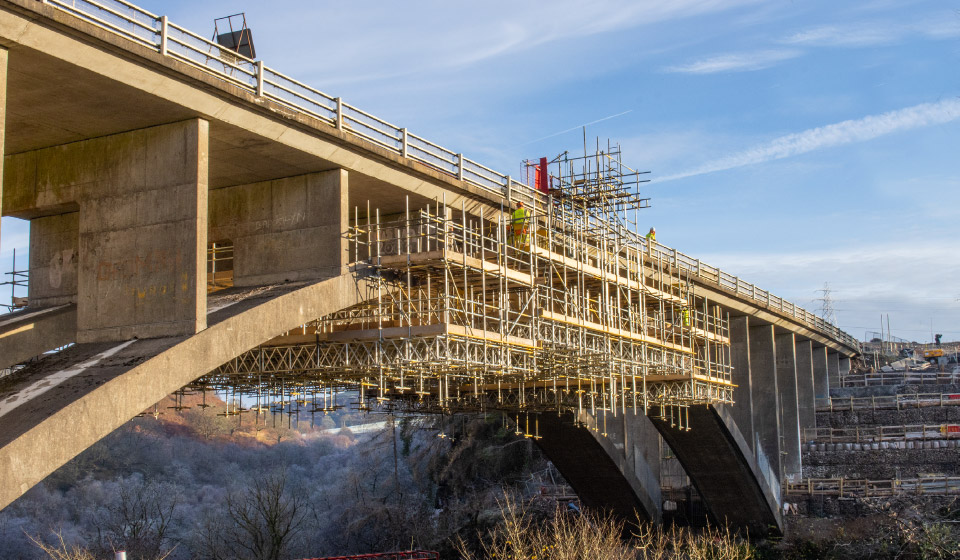
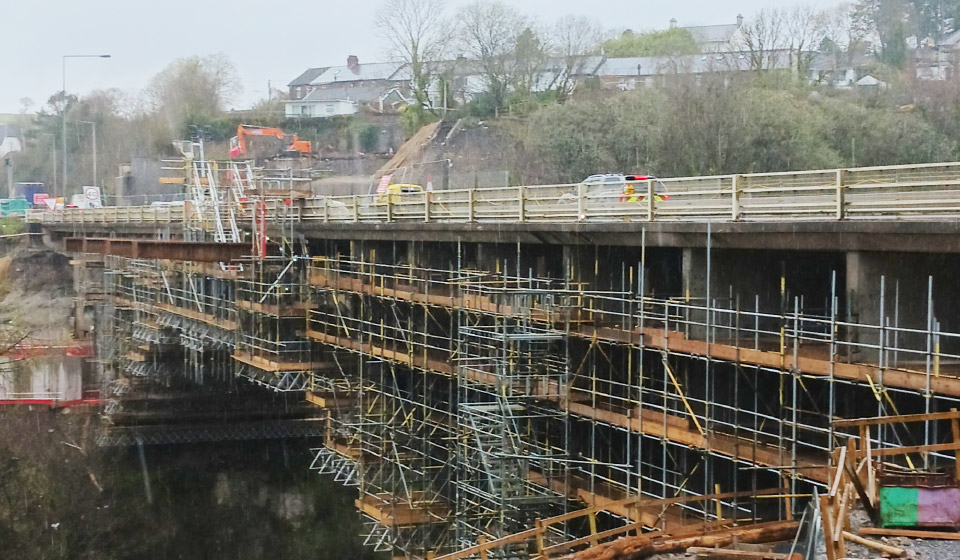
Value Engineering
Enigma has extensive experience installing temporary works platforms/walkways and slung scaffolds on steel frame bridges. However, with an arched concrete flush faced structure, special attention, planning and additional calculations are needed to design the scaffold. With detailed risk assessments carried out before installation to ensure the provision for load exertions and tie-point locations are sufficient. These tolerance factors require careful consideration along with the safe working loads that the original structure can withstand because the scaffolding being hung/slung is 100% reliant on the ties/fixing points. Extensive provisional testing was carried out beforehand at various locations on the bridge, so Enigma’s Design & Engineering team could assess the suitability of the proposed solution.
Additionally, we had to ensure minimal traces of intrusion to the historic concrete structure upon completion of the works by utilising all non-invasive methods of scaffold stabilisation where possible. At this location, the Fechan Gorge is a Site of Special Scientific Interest, and the Cyfarthfa Leat and Old Gurnos Tramway are Scheduled Ancient Monuments. Our installation has been carefully planned and designed so as not to disturb this historic and protected landscape.
We continue to work closely with the primary contractor offering advice and support with erecting any potential future scaffolds by presenting designs utilising detailed 3-Dimensional images. To help the client better visualise our proposals and understand what can be successfully achieved to overcome any challenges.
